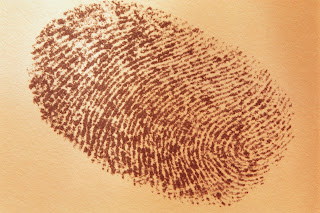
8. Gallows (Esther 7)
One of the fascinating aspects of the book of Esther is the use of irony. For example, Haman desires to be honored and to execute Mordecai, but he ends up having to honor Mordecai and being executed! And of course, another aspect of this irony is that Haman is literally executed on the gallows he built for Mordecai's execution.
So how does this evidence God's providential fingerprints? God takes note of the wicked, and He executes His justice (see Psalm 5:4-6). While we may not see the execution of God's justice in this life all the time, the Lord's justice is nevertheless sure. In other words, it may seem at times in this world that the wicked prosper and the righteous suffer, but we must always remember that this world will not last forever (see Psalm 37).
Of course, in the story of Esther, though, we see an actual example of how God's justice was executed in this life - Haman hung from the literal gallows he built for Mordecai. Again, we see here an example of God's providential fingerprints.
9. The markings of a signet ring (Esther 8)
It's fascinating to read that the king's signet ring was removed from Haman and put it on Mordecai's finger (see Esther 8:2)! Now the transition of authority is complete. In other words, whoever had the king's signet ring literally had the imprint of the king's authority to do what they wanted to do.
Talk about God's providential fingerprints! In this example, we're actually seeing how the "imprint" of a king is illustrating the imprint of THE KING - the Lord God Almighty. I'm not trying to spiritualize the Text here in anyway by suggesting that the image of the king's imprint had some type of reference to God or something - I don't even know what image was on the king's signet ring. I'm simply saying that in God's providence and sovereignty, He used the imprint of a king's signet ring to show how He was working to accomplish His will to save His people from genocide.
10. Turned tables (Esther 9)
I find the words of Esther 9:1 to be very interesting: "On the thirteenth day of the twelfth month, the month of Adar, the edict commanded by the king was to be carried out. On this day the enemies of the Jews had hoped to overpower them, but now the tables were turned and the Jews got the upper hand over those who hated them" (NIV).
Interesting, don't you think? Through much of the story, it appears that the Jews are hopelessly doomed, but when everything is said and done, the opposite occurs.
So here's the obvious question: Who turned the tables? You guessed it, God's providential fingerprints! Just as God fought Israel's battles before (see Joshua 10:11), He did it again here. The Lord delivered His people - not only in the actual battles that were waged but also in all the events leading up to the battles. For example, the favor of Hegai and the king, the promotion of Esther, the spoiled assination plot, the sinister pride of Haman, the risking of a life, the building of a set of gallows, the reading of the royal records on a night when the king couldn't sleep, the honoring of Mordecai, etc., God's sovereignty is seen over all these things, and He accomplished His will.
There's no doubt that God worked according to His absolute power in the book of Esther - we can see His providential fingerprints everwhere in the story. And He's the same God today, sovereignly working in our lives as well.
So be encouraged. It's been well-said that even when you may not be able to trace God's hand, you can always trust His heart. He's in control, and He's accomplishing His perfect purposes for the glory of His name through times of both pleasure and pain.
Blessings!




No comments:
Post a Comment